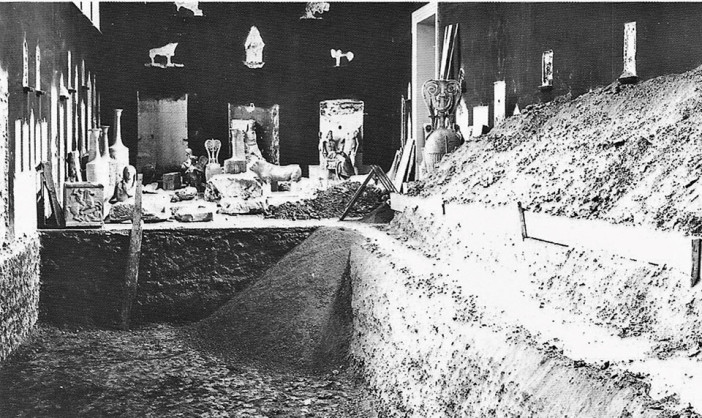The Nazis had expected thousands of antiques when they entered the National Archaeological Museum. The only barrier that kept them from stealing the hidden riches was the persistent effort of the museum’s workers.
The Greek Ministry of Culture devised a plan to ensure the utmost protection of their priceless relics. Following their orders, the National Archaeological Museum hid the treasure where no Nazi would find it.
The Meticulous Plan of the Greeks
The 27th day of April in 1941 marked the entrance of the ferocious German army to Athens, indicating the hindrance of resistance from the Greek Military. On the following morning, the valued treasures and artifacts were to be investigated in the National Archeological Museum by the Nazi officials. Unexpectedly, they found the museum to be empty.
Fearing the inevitable event that the Nazis would steal the Greek riches, the curators and archaeologists of the museum conspired on a clever plan six months before the arrival of the Nazis in Athens. Devising this plan would mean ensuring the protection of the rich immemorial past of the Greeks.
The country’s war declaration in October 1940 was the only catalyst the Greek Ministry of Culture needed to guarantee the protection of its collectibles. The Greek Ministry of Culture’s archaeology department immediately informed and sent out letters to all the museums, writing thorough guides and instructions on the essential conservation of the Greek antiques from raids and other forms of harassment from the ongoing war.
In the instructions were two methods for the protection of their valuables. The first procedure informed them to protect the specific item with a temporary wooden scaffolding before covering it with an appropriate sandbag. The second procedure instructed to bury the statue underground. The latter method was deemed more effective.
The National Archaeological Museum responded by arranging committees, beginning the significant scheme to hide the thousands of their antiques.
Early in the morning, even before the moon had set, the people who had undertaken this job would gather at the museum, and they would leave for home really late at night. The storing of the statues would take place according to the size and importance of each one. The bulkiest among them would be lined up standing in deep ditches that had been dug in the floors of the north halls of the museum, whose foundations happened to lay on softer underground
Semni Karouzu
(Source: Pappas Post)
Where Did They Hide the Artifacts?
Deep in the museum’s basement, the museum crew dug enormous pits – so large it reached the streets and avenues of Boubolinas Street in Athens. Museum technicians improvised the usage of cranes made out of wood to descend the many statues into the trenches. Extreme vigilance was required as the whole museum crew dedicated their time to lowering each valued relic to the concrete-protected ditches.
After the protected antiques’ transport, the crew added heaps of dirt and sand, serving as a finishing touch to further conceal the presence of its antiquities.
During the complex operation to hide the statues, museum registrars took the role of documenting the location of the valuables and their order of conservation. Exacting details were required to safeguard the uncovering of these antiques. The general treasurer of the Bank of Greece kept the piles of recorded information to assure its safety. Along with the documentation, they also transferred priceless items such as the famous treasures and golden articles from Mycenae. (Source: Pappas Post)
The Successful Aftermath
The 6-month operation finally reached its end, ten days after the Nazis arrived in Athens.
From the bare walls to the unoccupied showcases, it was evident that not a single thing would be taken from the museum. The Nazis were bewildered by the emptiness of the museum, and not one staff member had given up the secret of the plan.
In the end, the National Archaeological Museum protected all of its treasures, with its location never disclosed. It was 1944, years after the freeing of Athens, when the antiques were dug up and revealed. (Source: Pappas Post)
